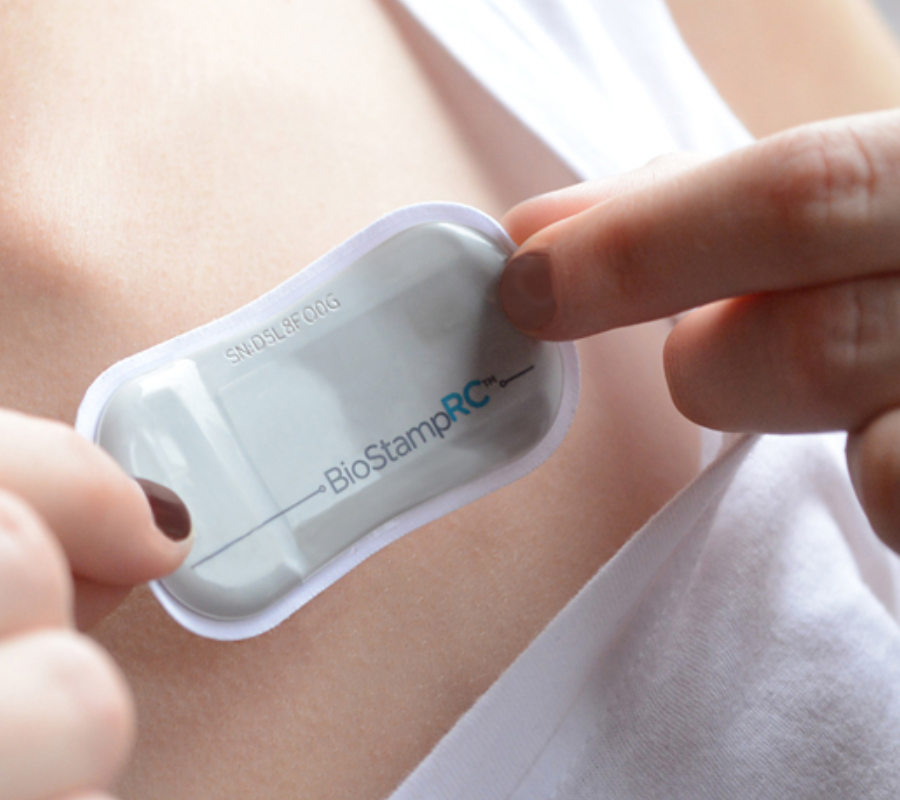A new study concluded that wearable biosensors can allow the measurement of vital signs, among other factors that can help the person manage its health and have more rapid, accurate, and frequent diagnoses.
By measuring heart rate, blood oxygen levels, physical activity, heart rate, among other body functions, wearables can register the physiological changes that the body goes through every single day, allowing the patient to monitor activity during the day. They would also serve to obtain new information concerning daily patterns of activities and environments, as suggested by Michael Snyder, Ph.D., senior author of the study.

The future of epidemiology
Changes in bodily functions can reveal vital information about a person’s health. For example, an abnormal rise in body temperature usually indicates infection or inflammation; blood oxygen levels are dangerous for people with a chronic pulmonary disease who need supplementary oxygen to oxygenate their blood, and a higher heart rate and blood pressure are potential indicators of heart disease.
Snyder, from Stanford University School of Medicine, suggests that measuring these rates is problematic at most, mainly because they are usually not identified months after the disease has been acknowledged by the patient. Researchers compare the situation to a person being able to head to the doctor once every two years, which would still indicate that a health condition may arise months after something could be done in advance to prevent it.

The main issue lies in the fact that it is easy to have measurements of large populations, although it’s hard to have accurate measurements of a single person for a prolonged period. Physiological parameters are also highly variable from person to person, making it difficult for physicians to have the best information available about their patient’s health.
Now wearables are considered low-cost devices that can promise an optimized approach to physiological measurements, providing insight to how the body undergoes changes as it gets affected by a disease. They could provide accurate measurements and immediately deliver the data to wherever it is needed, alongside a GPS signal that can help find the person if it were to be in danger.
Currently, there are at least 500 different wearables that help watch out a person’s health, which is triple the amount of what already existed in 2013.
How health-based wearables can be useful
To actually analyze the data that wearable technology could provide, researchers took a 58-year-old male, known as Participant 1, and measured his activity over the course of 24 months. They provided Participant 1 with seven wearables that were considered easy to use and accurate. The devices measured his heart rate, blood oxygen levels, skin temperature, burn calories, acceleration, sports activity, weight, and gamma and X-ray radiation, adding up to 250,000 measurements per day.
The patient also flew on commercial flights to analyze the changes in body functions for the situation. Most of the data was recorded on a smartphone and weighed against 73 monitored medical visits. Researchers also recruited 59 additional participants to measure differences in their use of wearables, which would allow assessing deviations from normal health levels, changes due to environmental conditions, and physiological changes due to illnesses.

Curiously, Participant 1 was Snyder himself. He had flown on airplanes extensively wearing his monitoring devices. On a flight headed to Norway, Snyder saw abrupt changes in his heart rate and blood oxygen levels. He was familiar from previous trips on how his oxygen levels dropped while on a commercial flight and his heart rate increased, something that was confirmed by measurements made on other participants. After landing, his measurements remained the same; shortly after, he was feverish and had other symptoms appear.
Snyder believed that he was bitten by a tick as he was helping his brother build a fence in rural Massachusetts, which would affect him with Lyme disease. While in Norway, he was able to get a prescription for doxycycline to fend off the disease. Later, he was tested, and it was confirmed that he had been infected with Lyme.
He noted that it was remarkable that the sensors gave signs of the disease before any symptoms started to appear. This is a breakthrough in epidemiology, seeing that there is a gap between the moment that the body becomes infected up to when the medical diagnosis is performed. Having access to precise data before the disease strikes will revolutionize how diseases are diagnosed and prevented.
Other participants saw increases in heart rate and skin temperature, alongside increased levels of C-reactive protein in their blood tests. Such protein appears whenever the body is experiencing infection or inflammation, which is an indicative of autoimmune and cardiovascular disease, and even a precursor to cancer.
The wearable health market has propelled itself forward, seeing that over 50 million smartwatches have been sold, although physicians are yet to take full advantage of this rather new technology.
“We have more sensors on our cars than we have on human beings,” stated Snyder to Stanford press, who yearns for the situation to change for people to prioritize their health.
Source: EurekAlert
